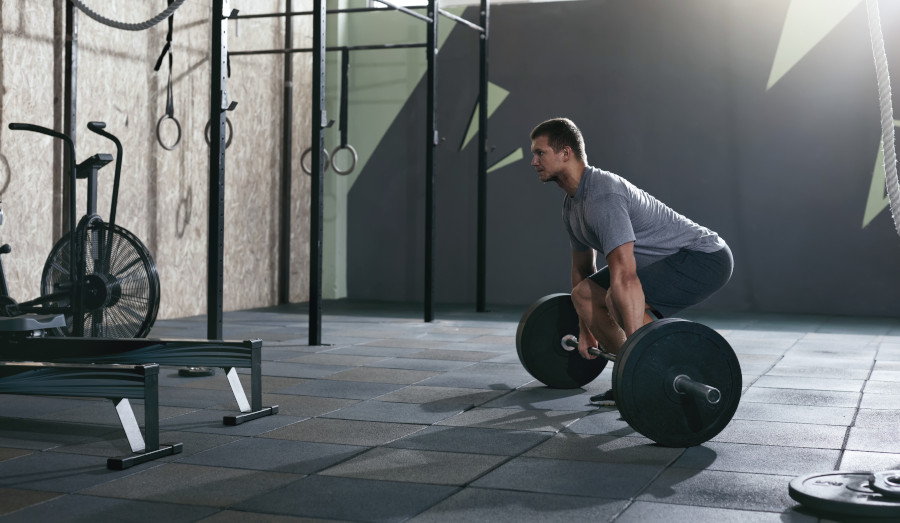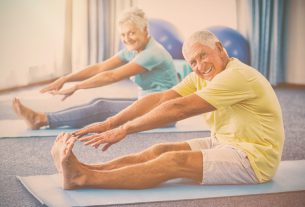When preparing for a s*** hits the fan situation (SHTF), there are three types of preparedness required: mental preparedness, physical preparedness, and material preparedness. We covered mental preparedness in our last installment, and now it’s time to cover physical preparedness.
Imagine a stereotypical prepper, and most people probably think of an obese gun nut covered in Cheetos dust with a huge stash of SPAM, canned chili, and soda in the basement. There’s definitely an overemphasis in the prepping world on material preparedness and an underemphasis on physical preparedness. Having plenty of stuff is fine, but all the goodies in the world won’t help you in a survival situation if you’re too out of shape or unhealthy to be able to use them.
You don’t have to be as in shape as a top-level athlete or a top-tier soldier either. But you need to be prepared for any physical exertion that comes your way, which could be significant. If you’re not prepared physically, there’s a good chance that in a serious survival situation you may not survive.
Borrowing from Dan John, there are three types of basic athletic movements that have maximum carryover to daily life:
1. Picking things up
2. Putting things over your head
3. Carrying things for distance
And these three movement types will form the core of a workout regime that can get you in shape for SHTF.
1. Picking Things Up
Picking objects up off the ground is one of the most basic movements that anyone performs. And there’s no better movement to train that than the deadlift.
At its core, the deadlift is simple – merely pick up a barbell off the ground. But if you don’t do the movement properly, even with light weights, you can really do damage to your spine and back.
If you’ve never lifted weights before, don’t be afraid to use light weights to start out. With a standard barbell, you can use Olympic training plates to make sure the bar is at the proper height to lift. And once you become used to the movement, you can increase the weight you lift accordingly.
There are numerous programs and methods of deadlifting, and it’s up to you which one you want to choose. If deadlifts are the only weighted movement you do, you may be able to get away with lifting twice per week, at least if you’re not lifting maximal weights all the time.
Some people may try a “grease the groove” type of lifting, in which you lift light weights for low reps many times over the course of the day, trying to build up both work capacity and neural pathways responsible for lifting efficiency. There are also numerous types of deadlifts, such as Romanian deadlifts, trap bar deadlifts, etc., which can add some variety into your lifting routine.
The key to developing your strength and ability to lift things is to start doing it and keep at it. There’s hardly a muscle group in your body that isn’t worked by deadlifts, from your legs and back to your arms, shoulders, and core muscles. If you had to do only one exercise that gave you the most bang for your buck, the deadlift would be it.
2. Lifting Things Overhead
Lifting things overhead is another common movement that needs to be trained. Whether you’re putting soup cans on an upper shelf, working on a ceiling, or placing a suitcase in an overhead compartment, lifting weight overhead is an important movement, and there are a lot of different ways to train it.
Probably the most common exercise is the overhead press, sometimes called the military press. It consists of picking up a barbell, bringing it to your shoulders, and pressing it above your head. The exercise can also be done with barbells, kettlebells, exercise bands, or in different positions such as sitting and kneeling.
These overhead pressing exercises help to strength the shoulder girdle and to a lesser extent the chest, and can be part of a routine to strengthen and protect your shoulders. If you’ve ever injured your shoulder and had trouble raising your arms overhead or moving your arms in certain directions, you’ll know how important shoulder health can be.
These overhead pressing exercises can be done with more regularity, 2-3 times a week. Look online and you can find examples of programs that can help you with these lifts.
3. Carrying Weight for Distance
When weightlifters, bodybuilders, or strongmen think of carrying weight for distance, they’re normally thinking of farmer’s walks or yoke walks. A farmer’s walk consists of carrying a heavy weight like a dumbbell in each hand and carrying it for time or distance. A yoke walk consists of carrying a specialized yoke rack over the back of the shoulders (like an ox yoke) and carrying for time and distance.
Each of these exercises is beneficial, training the heart, lungs, back, shoulders, and grip. But for SHTF purposes there’s probably a more beneficial exercise: weighted hikes.
In a SHTF scenario, there’s a good chance you may have to get out on the move, with a pack on, for hours or days at a time. If you’re not used to that, not only will you be winded, you’ll also find that your ankles, knees, and feet get sore and blistered.
Weighted hikes can be as simple as putting weight in a backpack and walking around your neighborhood for an hour. Depending on your weight, age, and level of health, you’ll want to start off with light weights and short distances. Focus on adding more weight, adding more distance, and walking faster.
Not only will you build up your cardiovascular health, but you’ll also develop the ability to hike longer distances. There may come a time when you’ll have to shoulder a 50-pound bug out bag, carry a rifle, and move yourself and your family to safety on foot. If and when that time comes, it will be far better for you to be physically prepared than not.
This article was originally posted on Red Tea News.





